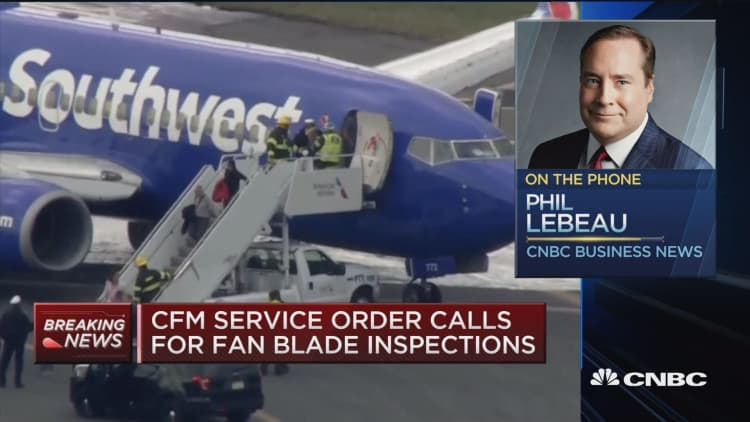Southwest Airlines has sped up a sweeping inspection of its engines following a midair failure last week that killed a passenger, the airline's first fatal accident in its almost five decades of flying. But the engine parts that have been under the most scrutiny may not have been the only factor in the accident, a company executive said Thursday.
One of the fan blades on the Boeing 737-700 broke off during the New York-to-Dallas flight on April 17. After the blade broke off, shrapnel flew, puncturing the fuselage. A passenger, bank executive Jennifer Riordan, was partially sucked through a blown-out window, and died. But the engine also lost part of its cowling, which surrounds the engine's fan.
"Now, we know that the engine inlet cowling suffered significant damage and lost pieces of that cowling may be responsible for the damage to the fuselage, the wing and the stabilizer," said Southwest COO Mike Van de Ven on a call after posting earnings on Thursday. "And the loss of a single blade inside the engine just shouldn't have caused such dramatic impact."

"What we are talking about is whether or not there are opportunities in the inlet cowling to improve durability so that it can minimize the kind of energy that comes out with this fan blade release," he said.
The airline, which carries more passengers within the U.S. than any other airline, had inspected about 17,000 of the more than 35,000 fan blades on its engines before last week's accident, Van de Ven said.
One out of those had at least one crack in it, and had been replaced, the company said.
The airline accelerated its blade tests after last week's engine failure and expects to complete the task next month. It said no other cracks were found in blades since it accelerated those tests last week.
The engine's manufacturer, CFM International, on Friday called for more stringent tests of this type of engine, the CFM56-7B, one of the world's most commonly used. CNBC had reported the manufacturer was planning to issue such a recommendation before the April 17 failure. Airline regulators in the U.S. and Europe then mandated the stepped-up checks.


